This video showcases the 16x16 LED RGB matrix. It covers all the technical details and provides a wiring example. In the end you get two different code examples to learn how to use the panel.
You can get the panel here:
Wiring diagram:

Code example 1:
// Adafruit_NeoMatrix example for single NeoPixel Shield. // Scrolls 'Howdy' across the matrix in a portrait (vertical) orientation. #include <Adafruit_GFX.h> #include <Adafruit_NeoMatrix.h> #include <Adafruit_NeoPixel.h> #ifndef PSTR #define PSTR // Make Arduino Due happy #endif #define PIN 16 // MATRIX DECLARATION: // Parameter 1 = width of NeoPixel matrix // Parameter 2 = height of matrix // Parameter 3 = pin number (most are valid) // Parameter 4 = matrix layout flags, add together as needed: // NEO_MATRIX_TOP, NEO_MATRIX_BOTTOM, NEO_MATRIX_LEFT, NEO_MATRIX_RIGHT: // Position of the FIRST LED in the matrix; pick two, e.g. // NEO_MATRIX_TOP + NEO_MATRIX_LEFT for the top-left corner. // NEO_MATRIX_ROWS, NEO_MATRIX_COLUMNS: LEDs are arranged in horizontal // rows or in vertical columns, respectively; pick one or the other. // NEO_MATRIX_PROGRESSIVE, NEO_MATRIX_ZIGZAG: all rows/columns proceed // in the same order, or alternate lines reverse direction; pick one. // See example below for these values in action. // Parameter 5 = pixel type flags, add together as needed: // NEO_KHZ800 800 KHz bitstream (most NeoPixel products w/WS2812 LEDs) // NEO_KHZ400 400 KHz (classic 'v1' (not v2) FLORA pixels, WS2811 drivers) // NEO_GRB Pixels are wired for GRB bitstream (most NeoPixel products) // NEO_GRBW Pixels are wired for GRBW bitstream (RGB+W NeoPixel products) // NEO_RGB Pixels are wired for RGB bitstream (v1 FLORA pixels, not v2) // Example for NeoPixel Shield. In this application we'd like to use it // as a 5x8 tall matrix, with the USB port positioned at the top of the // Arduino. When held that way, the first pixel is at the top right, and // lines are arranged in columns, progressive order. The shield uses // 800 KHz (v2) pixels that expect GRB color data. Adafruit_NeoMatrix matrix = Adafruit_NeoMatrix(16, 16, PIN, NEO_MATRIX_TOP + NEO_MATRIX_LEFT + NEO_MATRIX_COLUMNS + NEO_MATRIX_ZIGZAG, NEO_GRB + NEO_KHZ800); const uint16_t colors[] = { matrix.Color(255, 0, 0), matrix.Color(0, 255, 0), matrix.Color(0, 0, 255) }; void setup() { matrix.begin(); matrix.setTextWrap(false); matrix.setBrightness(40); matrix.setTextColor(colors[0]); matrix.setTextSize(1); } int x = matrix.width(); int pass = 0; void loop() { matrix.fillScreen(0); matrix.setCursor(x, 0); matrix.print(F("AZ-Delivery")); if(--x < -72) { x = matrix.width(); if(++pass >= 3) pass = 0; matrix.setTextColor(colors[pass]); } matrix.show(); delay(100); }
Code bitcoin price:
// Adafruit_NeoMatrix example for single NeoPixel Shield. // Scrolls 'Howdy' across the matrix in a portrait (vertical) orientation. #include <Adafruit_GFX.h> #include <Adafruit_NeoMatrix.h> #include <Adafruit_NeoPixel.h> #include "credentials.h" #include <ArduinoJson.h> #include <WiFi.h> #include <HTTPClient.h> // search for crypto apis String serverName = "https://api.replacemewithyourfavoriteapi.com/price?ids=bitcoin%2Cdogecoin&vs_currencies=eur"; unsigned long previousMillis = 0; float value_bitcoin = 0; float value_dogecoin = 0; #ifndef PSTR #define PSTR // Make Arduino Due happy #endif #define PIN 16 // MATRIX DECLARATION: // Parameter 1 = width of NeoPixel matrix // Parameter 2 = height of matrix // Parameter 3 = pin number (most are valid) // Parameter 4 = matrix layout flags, add together as needed: // NEO_MATRIX_TOP, NEO_MATRIX_BOTTOM, NEO_MATRIX_LEFT, NEO_MATRIX_RIGHT: // Position of the FIRST LED in the matrix; pick two, e.g. // NEO_MATRIX_TOP + NEO_MATRIX_LEFT for the top-left corner. // NEO_MATRIX_ROWS, NEO_MATRIX_COLUMNS: LEDs are arranged in horizontal // rows or in vertical columns, respectively; pick one or the other. // NEO_MATRIX_PROGRESSIVE, NEO_MATRIX_ZIGZAG: all rows/columns proceed // in the same order, or alternate lines reverse direction; pick one. // See example below for these values in action. // Parameter 5 = pixel type flags, add together as needed: // NEO_KHZ800 800 KHz bitstream (most NeoPixel products w/WS2812 LEDs) // NEO_KHZ400 400 KHz (classic 'v1' (not v2) FLORA pixels, WS2811 drivers) // NEO_GRB Pixels are wired for GRB bitstream (most NeoPixel products) // NEO_GRBW Pixels are wired for GRBW bitstream (RGB+W NeoPixel products) // NEO_RGB Pixels are wired for RGB bitstream (v1 FLORA pixels, not v2) // Example for NeoPixel Shield. In this application we'd like to use it // as a 5x8 tall matrix, with the USB port positioned at the top of the // Arduino. When held that way, the first pixel is at the top right, and // lines are arranged in columns, progressive order. The shield uses // 800 KHz (v2) pixels that expect GRB color data. Adafruit_NeoMatrix matrix = Adafruit_NeoMatrix(16, 16, PIN, NEO_MATRIX_TOP + NEO_MATRIX_LEFT + NEO_MATRIX_COLUMNS + NEO_MATRIX_ZIGZAG, NEO_GRB + NEO_KHZ800); const uint16_t colors[] = { matrix.Color(255, 0, 0), matrix.Color(0, 255, 0), matrix.Color(0, 0, 255), matrix.Color(255, 165, 0)}; void connectAP() { Serial.println("Connecting to WiFi.."); WiFi.begin(ssid, password); int cnt = 0; while (WiFi.status() != WL_CONNECTED) { delay(1000); Serial.print("."); cnt++; if (cnt > 20) ESP.restart(); } Serial.println(WiFi.localIP()); } int x = matrix.width(); int pass = 0; void getCryptoData() { if (WiFi.status() == WL_CONNECTED) { HTTPClient http; http.begin(serverName.c_str()); int httpResponseCode = http.GET(); if (httpResponseCode > 0) { Serial.print("HTTP Response code: "); Serial.println(httpResponseCode); String payload = http.getString(); // Serial.println(payload); // JSON Output from https://arduinojson.org/v6/assistant StaticJsonDocument<96> doc; DeserializationError error = deserializeJson(doc, payload); if (error) { Serial.print("deserializeJson() failed: "); Serial.println(error.c_str()); return; } value_bitcoin = doc["bitcoin"]["eur"]; value_dogecoin = doc["dogecoin"]["eur"]; Serial.println(value_bitcoin); Serial.println(value_dogecoin); } else { Serial.print("Error code: "); Serial.println(httpResponseCode); } http.end(); } else { Serial.println("Reconnect to AP"); connectAP(); } } void showMatrix() { // https://javl.github.io/image2cpp/ // 'pixil-frame-0', 7x10px const unsigned char bitcoinlogo[] PROGMEM = { 0x48, 0xfc, 0xfe, 0xc6, 0xfc, 0xfc, 0xc6, 0xfe, 0xfc, 0x48}; matrix.fillScreen(0); matrix.setCursor(x, 0); matrix.print(value_bitcoin); if (--x < -72) { x = matrix.width(); if (++pass >= 3) pass = 0; matrix.setTextColor(colors[pass]); } matrix.drawBitmap(4, 6, bitcoinlogo, 7, 10, colors[3]); matrix.show(); delay(100); } void setup() { Serial.begin(115200); connectAP(); matrix.begin(); matrix.setTextWrap(false); matrix.setBrightness(40); matrix.setTextColor(colors[0]); matrix.setTextSize(1); } void loop() { unsigned long currentMillis = millis(); if (currentMillis - previousMillis >= 15000) { previousMillis = currentMillis; getCryptoData(); } showMatrix(); }
Credentials:
const char* ssid = "az-delivery"; const char* password = "mysecretpassword";
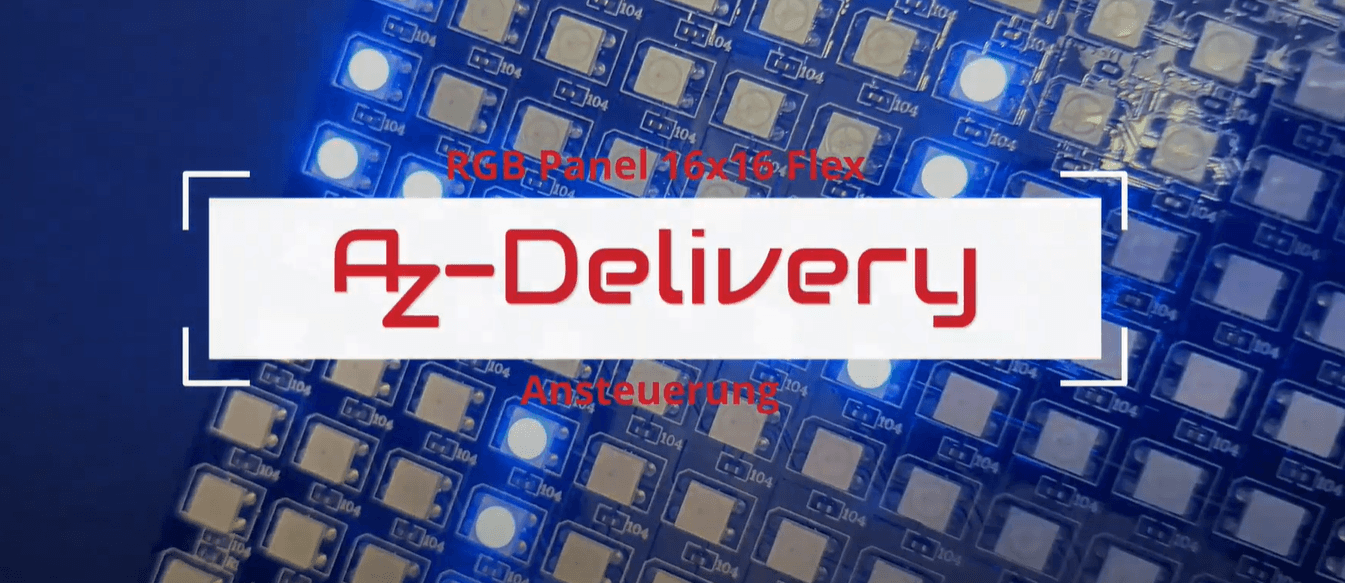




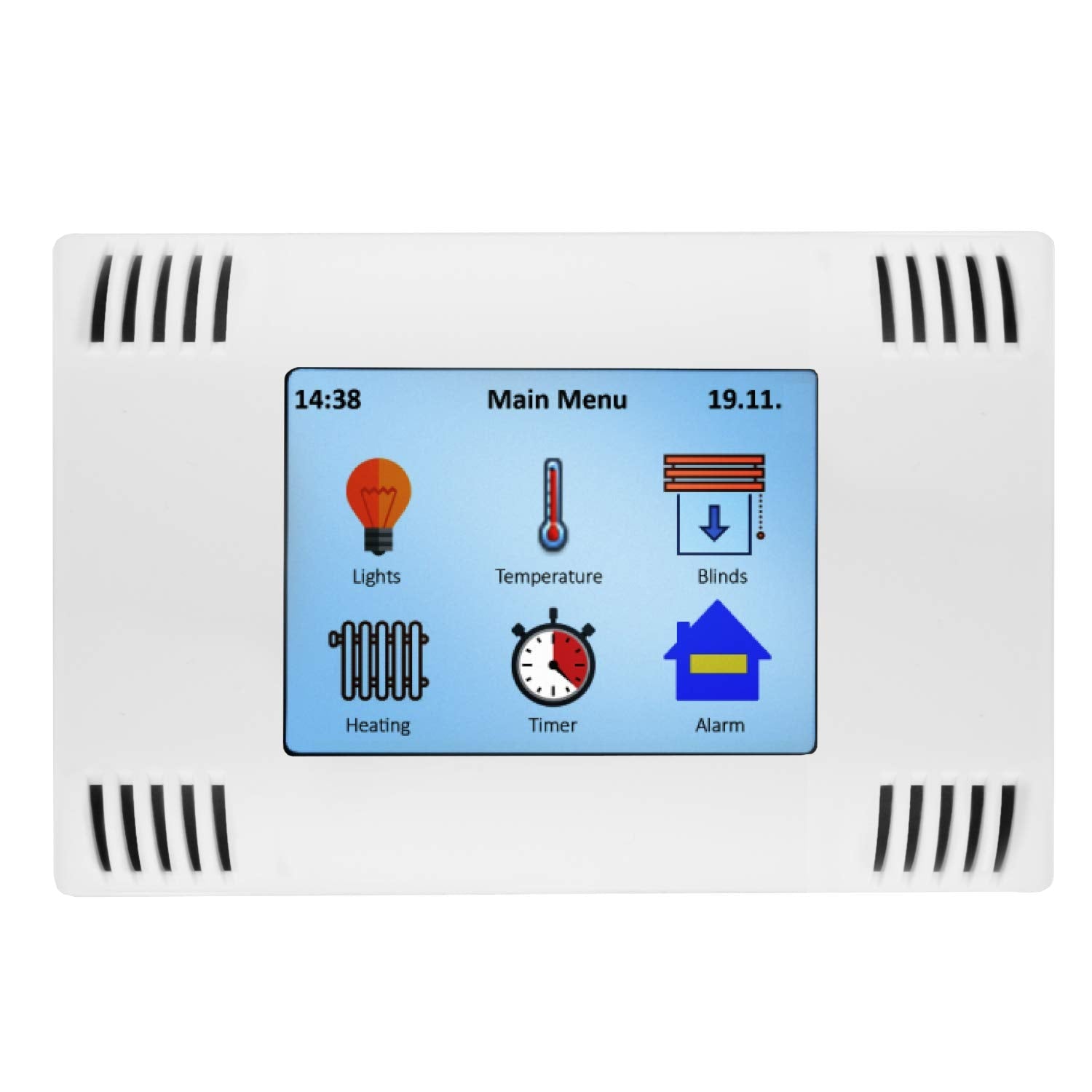
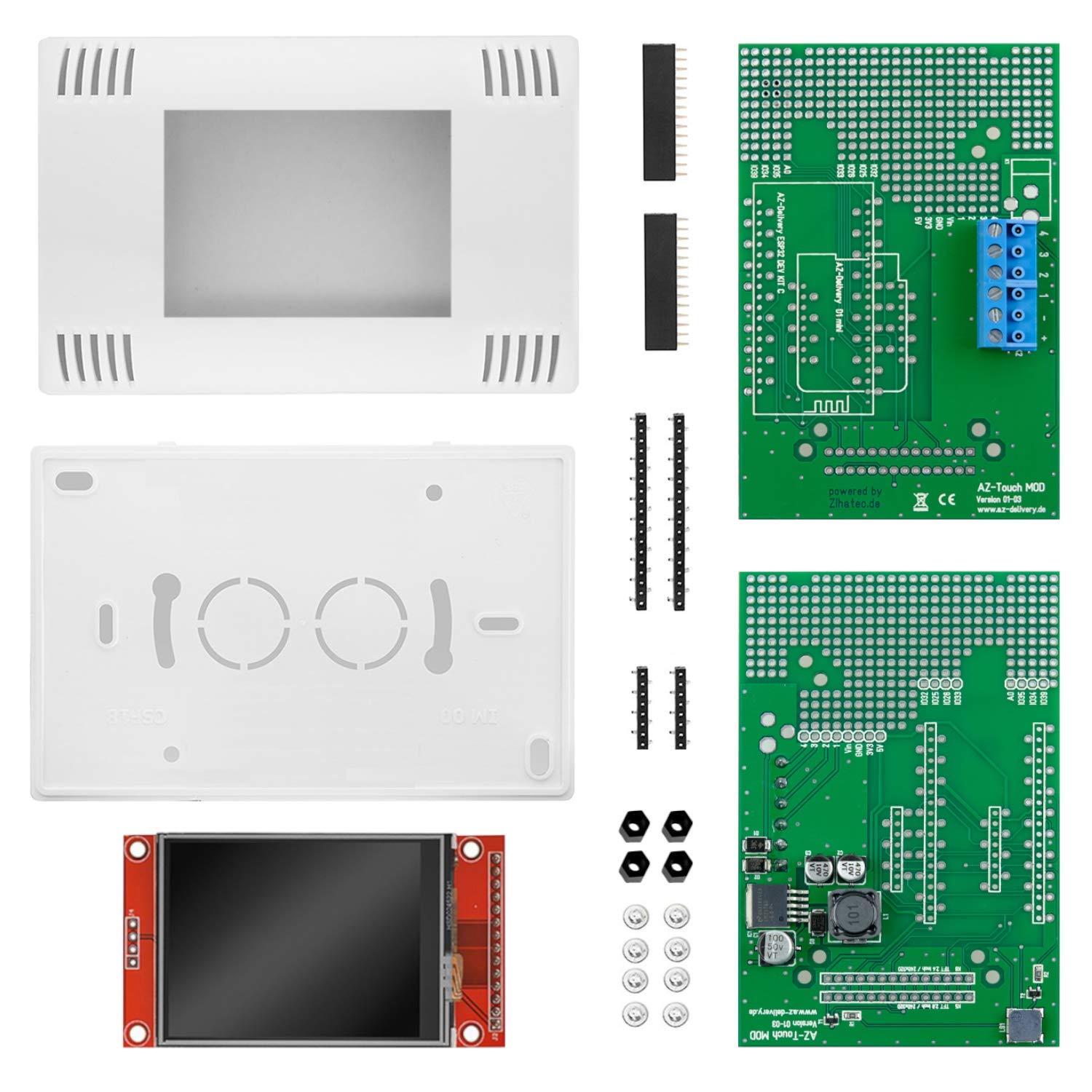
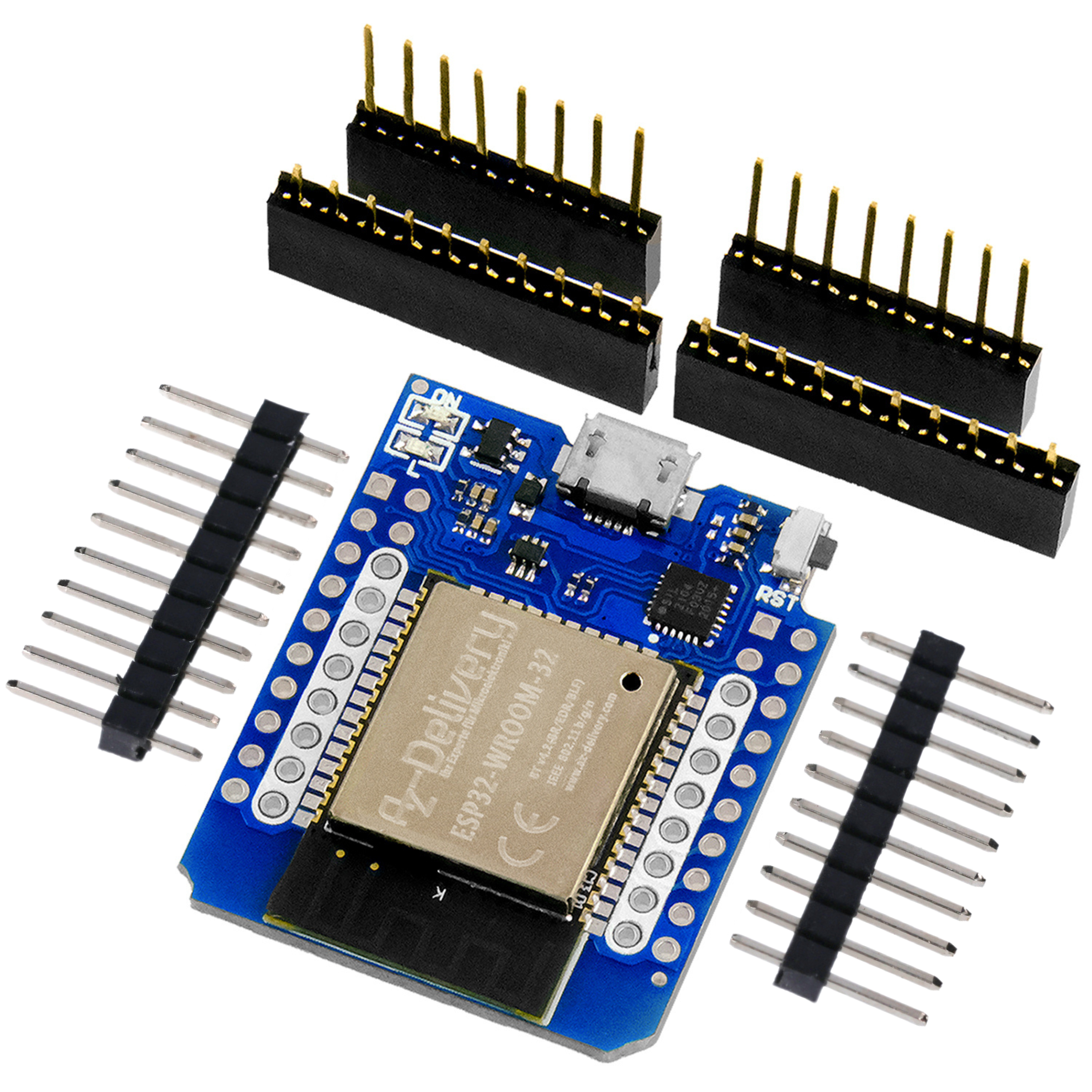
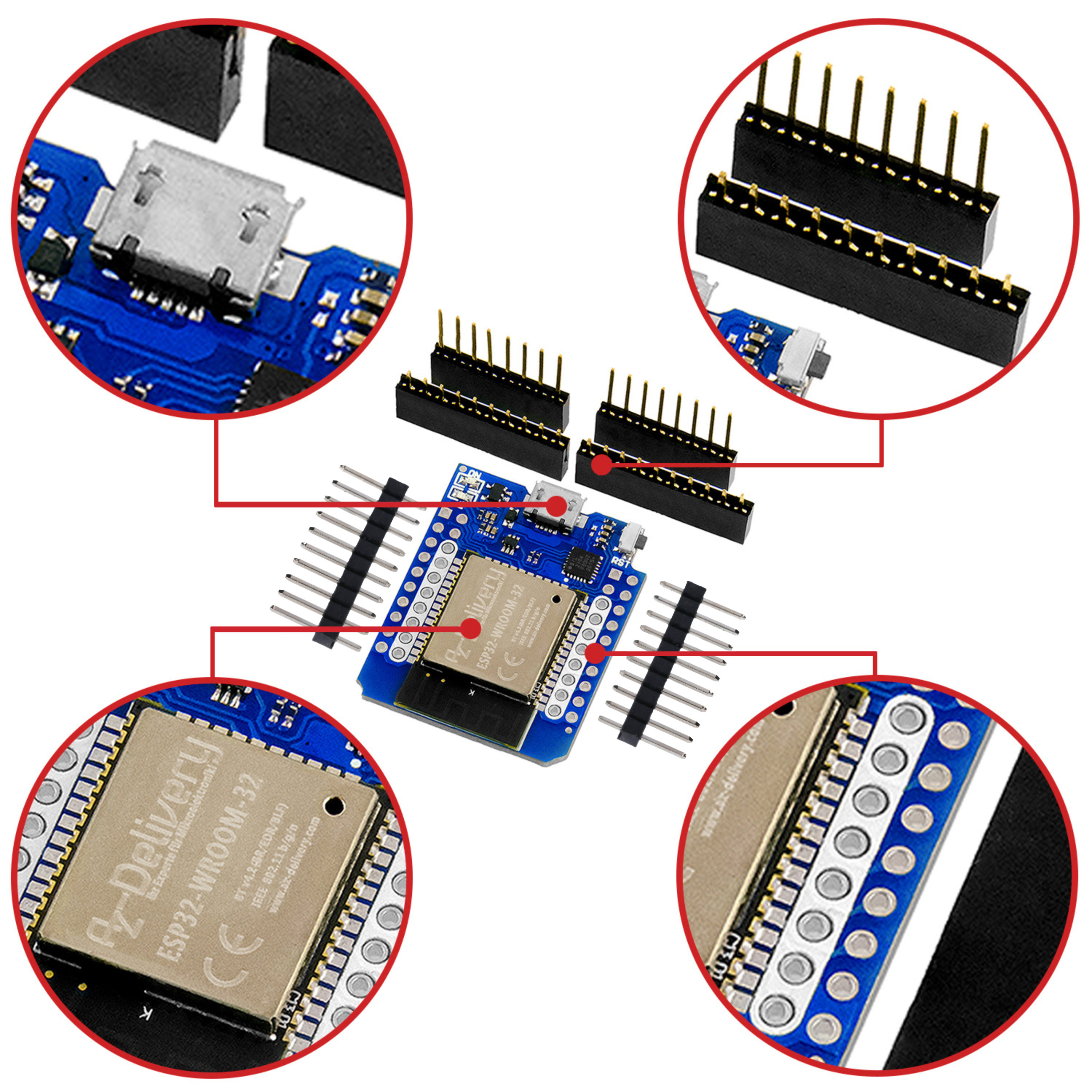


4 comments
Alois
Hab es ausgetestet: Im Code die Beightness auf 16 oder weniger. Dadurch kam ich nie über 1A für die Matrix. Das ist noch immer fast zu hell!
Axel Vogt
Bei der Entwicklung der Software ist ein DC-DC mit Strombegrenzer erforderlich. Ich begrenze so auf 4A. Man sollte auch bei der Einstellungen nur 10% Helligkeit einstellen.
Wenn man sicher gehen will, gibt es ACS712 Stromsensor und Relaismodul , somit hat man einen eigenen Strom schutz.
Olaf Meier
Hallo Daniel,
nach meiner Erfahrung beträgt der max. Strom je WS2812B 3 × 20 mA für die RGB LEDs alle eingeschaltet, ergibt also weiß. 60 mA * 256 LEDS alle in weiß strahlend, ergeben in der Tat 15,36 A! Allerdings wird kaum jemand so ein LED Panel als Weißlichtfluter nutzen. In der Praxis wird auch eher selten die volle Helligkeit aller LEDs gleichzeitig benötigt, meist werden die Farben zudem variabel je WS2812 zusammengemischt und benötigen allein dadurch schon deutlich weniger Strom. Selten werden auch alle LEDs gleichzeitig verwendet. Auch ist die Helligkeit bereits bei deutlich kleineren Strömen völlig ausreichend. Es können aber je nach Bildinhalt trotzdem schnell einige A zusammenkommen.
Ich kenne die Adafruit Lib nicht. Bei der fastled.io besteht die Möglichkeit den Strom per Software zu begrenzen.
Gruß Olaf
Daniel
Hallo zusammen,
Ich hätte eine Frage zu WS2812B Led Panel. Braucht man wirklich 16A zum betreiben des Panels ? Mir erscheint das relativ hoch. Kann ich hier auch eins nehmen mit weniger Ampere ?
Gruß Daniel